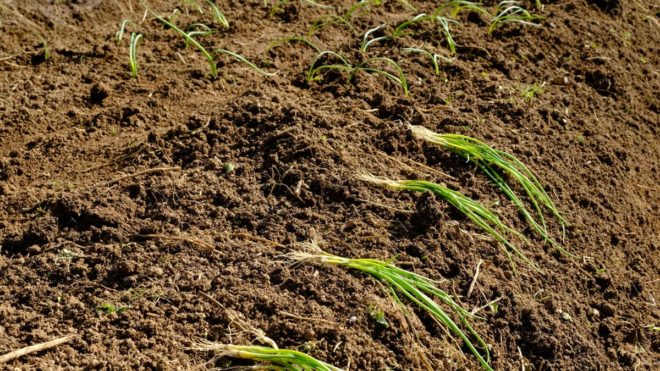The soil’s ability to cycle essential crop nutrients is undervalued in agriculture today. Considering that a large percentage of our crop budgets revolve around fertility, we need first to understand how to utilize the nutrients already contained in the soil, and the previous year’s crop residues. Microbes can help with this. One of the critical components to achieving a proper cycling soil is its microbial population. Fortunately, many factors contributing to a healthy soil’s microbial population are controllable.
What Do You Mean, “Microbes”?
The term microbes is very general and vague. When we talk about microbes in crop production, we are talking about four main groups that rely on each other to survive and maintain a productive soil. These groups include:
- Bacteria – are the most dominate microbes in soils and are very diverse within their own group. Some bacteria fixate nitrate, such as the rhizobia species (soybean inoculant). Certain species help us break down crop residue, and there are even bacteria strains that can help limit crop diseases in the soil.
- Fungi – while not populous in agricultural soils as bacteria, fungi do the heavy lifting when it comes to breaking down plant residue. Mycorrhizal fungi also play a critical role in maintaining the proper structure of the soils.
- Algae – algae play an essential role in the formation of soil organic matter. Algae also help with soil particle aggregation, which leads to better overall soil structure.
- Protozoa – protozoa are known as the “carnivores” of the soil. They move throughout the soil, consume the other microbes, and provide highly available plant fertility sources through their excitement.
Factors to Increase Microbial Activity
- Soil Temperature – much like corn, soil microbes require a specific temperature range to be most efficient. Interestingly, this temperature range is like that of corn (50-86 degrees F). For every 10-degree increase in this range, the microbe populations generally double. We must be mindful of the 86-degree mark because if soils get too warm, the microbe populations will crash quickly.
- Soil Structure – good soil structure does not only help with root development, it’s also critical to soil life. When a soil has good structure, it also has the correct balance of air and water. As the microbe populations increase, specifically the mycorrhizal fungi populations, they will help produce a better structure by developing glomalin (glue of the soil).
- Active Carbon – active carbon acts as a food source for many microbes. An excellent example of this is in-furrow sugar applications. The sugar molecule’s carbon component is highly available, and when consumed, microbe populations get a “jumpstart.” This activates this entire microbe population, which can then positively influence early-season crop growth.
- Diversity of Root Exudates – exudates are the fluids excreted by a plant’s roots. Different plants excrete different exudates. The difference in compositions between them is why some plants are better at extracting certain soil nutrients, repelling soil pests, and influencing soil structure. Overall, the more diversity we have in plant roots, the more balanced and productive the entire soil biome becomes.
~ Ben Puestow, CCA – Field Agronomist

